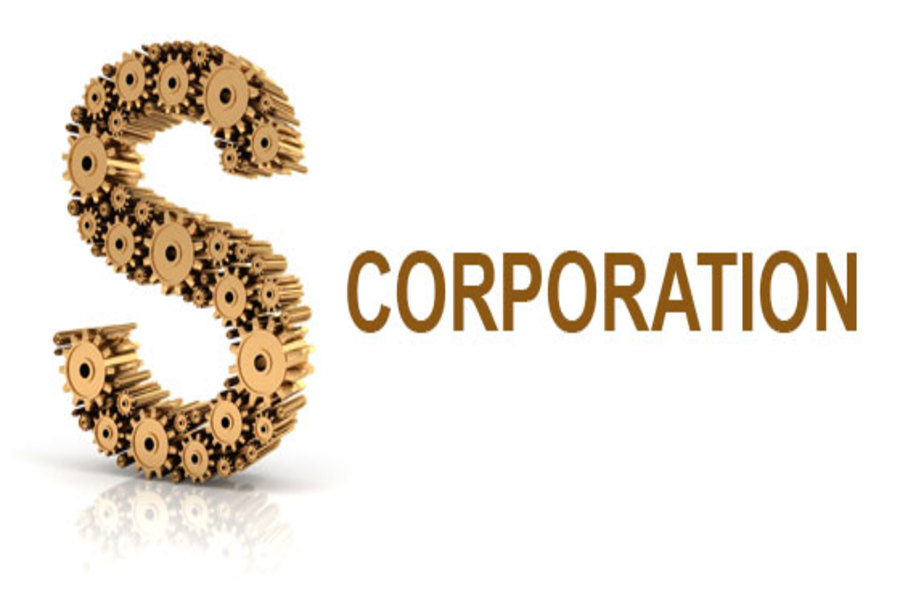Are you thinking about launching a business with some partners and wondering what type of entity to form? An S corporation may be the most suitable form of business for your new venture. Here’s an explanation of the reasons why. The biggest advantage of an S corporation over a partnership is that as S corporation shareholders, you won’t be personally liable for corporate debts. In order to receive this protection, it’s important that the corporation be adequately financed, that the existence of the corporation as a separate entity be maintained and that various formalities required by your state be observed (for example, filing articles of incorporation, adopting by-laws, electing a board of directors and holding organizational meetings). Anticipating losses If you expect that the business will incur losses...

All that glitters isn’t gold. This includes gold — and other precious metals, stones and jewels that are sometimes used to launder the “dirty” proceeds of criminal activities such as drug trafficking and terrorism. But several U.S. laws and regulations target these international money-laundering operations. Good as gold Precious metals, stones and jewels make ideal vehicles for money laundering for several reasons: Ownership and control. Precious metals are bearer instruments, meaning that like cash, the individual in possession of the precious metal owns and controls it. Readily transferable. There’s an active, global market that enables criminals to trade them. Because precious metals have many legitimate uses, criminals often can move them without attracting attention. Relatively stable. Although the price of precious metals fluctuates like those of any commodity, the value...
The U.S. Department of Labor (DOL) recently issued EBSA Disaster Relief Notice 2021-01, which is of interest to employers. It clarifies the duration of certain COVID-related deadline extensions that apply to health care benefits plans. Extensions to continue The DOL and IRS issued guidance last year specifying that the COVID-19 outbreak period — defined as beginning March 1, 2020, and ending 60 days after the announced end of the COVID-19 national emergency — should be disregarded when calculating various deadlines under COBRA, ERISA and HIPAA’s special enrollment provisions. The original emergency declaration would have expired on March 1, 2021, but it was recently extended. Although the agencies defined the outbreak period solely by reference to the COVID-19 national emergency, they relied on statutes allowing them to specify disregarded periods for a...
April 15 is the deadline for the first quarterly estimated tax payment for 2021, if you’re required to make one. You may have to make estimated tax payments if you receive interest, dividends, alimony, self-employment income, capital gains, prize money or other income. If you don’t pay enough tax during the year through withholding and estimated payments, you may be liable for a tax penalty on top of the tax that’s ultimately due. Four due dates Individuals must pay 25% of their “required annual payment” by April 15, June 15, September 15, and January 15 of the following year, to avoid an underpayment penalty. If one of those dates falls on a weekend or holiday, the payment is due on the next business day. The required annual payment for...
If you’re approaching retirement, you probably want to ensure the money you’ve saved in retirement plans lasts as long as possible. If so, be aware that a law was recently enacted that makes significant changes to retirement accounts. The SECURE Act, which was signed into law in late 2019, made a number of changes of interest to those nearing retirement. You can keep making traditional IRA contributions if you’re still working Before 2020, traditional IRA contributions weren’t allowed once you reached age 70½. But now, an individual of any age can make contributions to a traditional IRA, as long as he or she has compensation, which generally means earned income from wages or self-employment. So if you work part time after retiring, or do some work as...
While many businesses have been forced to close due to the COVID-19 pandemic, some entrepreneurs have started new small businesses. Many of these people start out operating as sole proprietors. Here are some tax rules and considerations involved in operating with that entity. The pass-through deduction To the extent your business generates qualified business income (QBI), you’re eligible to claim the pass-through or QBI deduction, subject to limitations. For tax years through 2025, the deduction can be up to 20% of a pass-through entity owner’s QBI. You can take the deduction even if you don’t itemize deductions on your tax return and instead claim the standard deduction. Reporting responsibilities As a sole proprietor, you’ll file Schedule C with your Form 1040. Your business expenses are deductible against gross income....
Fraud perpetrators are constantly altering their methods to evade detection. Nimble cybercriminals, for example, are why IT security companies update their software so frequently. The use of deepfakes (a word derived from “deep learning” and “fake”) is one of the latest threats to emerge. Deepfakes are enabled by artificial intelligence (AI) and they’re something your company needs to have on its radar because if you haven’t seen a deepfake yet, you will. Spotting an imposter A deepfake involves the use of AI to create video, audio or static images that seem real. You may have seen them in viral videos of famous people, such as one in which Facebook’s Mark Zuckerberg is shown saying he has “total control of billions of people’s stolen data.” As realistic as...
The American Rescue Plan Act, signed into law on March 11, provides a variety of tax and financial relief to help mitigate the effects of the COVID-19 pandemic. Among the many initiatives are direct payments that will be made to eligible individuals. And parents under certain income thresholds will also receive additional payments in the coming months through a greatly revised Child Tax Credit. Here are some answers to questions about these payments. What are the two types of payments? Under the new law, eligible individuals will receive advance direct payments of a tax credit. The law calls these payments “recovery rebates.” The law also includes advance Child Tax Credit payments to eligible parents later this year. How much are the recovery rebates? An eligible individual is allowed a 2021...
President Biden signed the $1.9 trillion American Rescue Plan Act (ARPA) on March 11. While the new law is best known for the provisions providing relief to individuals, there are also several tax breaks and financial benefits for businesses. Here are some of the business tax highlights of ARPA. The Employee Retention Credit (ERC) This valuable tax credit is extended from June 30 until December 31, 2021. The ARPA continues the ERC rate of credit at 70% for this extended period of time. It also continues to allow for up to $10,000 in qualified wages for any calendar quarter. Taking into account the Consolidated Appropriations Act extension and the ARPA extension, this means an employer can potentially have up to $40,000 in qualified wages per employee through 2021. Employer-Provided Dependent Care...
Are you a business owner thinking about hiring? Be aware that a recent law extended a credit for hiring individuals from one or more targeted groups. Employers can qualify for a tax credit known as the Work Opportunity Tax Credit (WOTC) that’s worth as much as $2,400 for each eligible employee ($4,800, $5,600 and $9,600 for certain veterans and $9,000 for “long-term family assistance recipients”). The credit is generally limited to eligible employees who began work for the employer before January 1, 2026. Generally, an employer is eligible for the credit only for qualified wages paid to members of a targeted group. These groups are: Qualified members of families receiving assistance under the Temporary Assistance for Needy Families (TANF) program, Qualified veterans, Qualified ex-felons, Designated community residents, ...
- 1
- 2
- 3
- 4
- 5
- 6
- 7
- 8
- 9
- 10
- 11
- 12
- 13
- 14
- 15
- 16
- 17
- 18
- 19
- 20
- 21
- 22
- 23
- 24
- 25
- 26
- 27
- 28
- 29
- 30
- 31
- 32
- 33
- 34
- 35
- 36
- 37
- 38
- 39
- 40
- 41
- 42
- 43
- 44
- 45
- 46
- 47
- 48
- 49
- 50
- 51
- 52
- 53
- 54
- 55
- 56
- 57
- 58
- 59
- 60
- 61
- 62
- 63
- 64
- 65
- 66
- 67
- 68
- 69
- 70
- 71
- 72
- 73
- 74
- 75
- 76
- 77
- 78
- 79
- 80
- 81
- 82
- 83
- 84
- 85
- 86
- 87
- 88
- 89
- 90
- 91
- 92
- 93
- 94
- 95
- 96
- 97
- 98
- 99
- 100
- 101
- 102
- 103
- 104
- 105
- 106
- 107
- 108
- 109
- 110
- 111
- 112
- 113
- 114
- 115
- 116
- 117
- 118
- 119
- 120
- 121
- 122
- 123
- 124
- 125
- 126
- 127
- 128
- 129
- 130
- 131
- 132
- 133
- 134
- 135
- 136
- 137
- 138
- 139
- 140
- 141
- 142
- 143
- 144
- 145
- 146
- 147
- 148
- 149
- 150











